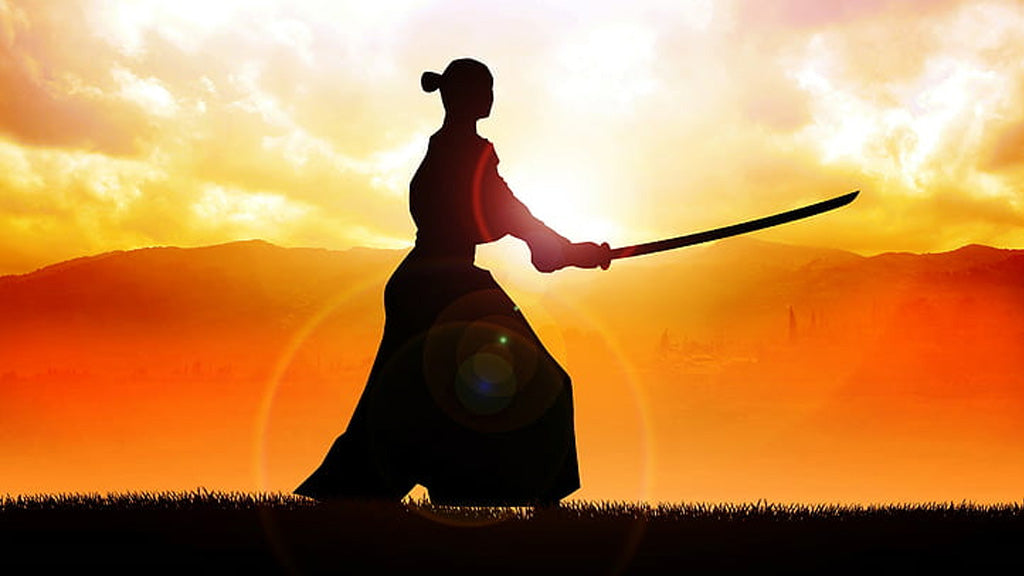Exploring the Samurai Sword Components: A Detailed Guide to the Katana

Components of a Sword: Exploring the Samurai Sword Components - A Detailed Guide to the Katana
What does a sword consist of?
The katana, like other swords, consists of several essential parts of the sword, each contributing to its functionality and balance. One key feature is the cross guard, or tsuba in Japanese swords, which helps protect the hand during combat. Unlike the Roman gladius, which was designed primarily for thrusting, the katana is a thrusting sword but is also known for its slashing ability due to its curved blade.
The blade is typically wrapped in leather or a similar material to protect the tang and provide a secure grip. The hilt (or tsuka) is usually wrapped in a tightly bound material, often ray skin and silk, offering comfort and grip during use. These components of the katana work together to create a weapon that is both practical and artistic, representing the skill and tradition of Japanese sword-making.
1. The structure of the samurai sword
(1) KASHIRA (Butt cap): The cover of the head of the tsuka, the wire rope on the handle is knotted on the head, and most of them are metal products such as copper and iron.

(2) ITO(Handle Wrap): The wire rope wrapped around the handle of the sword acts on the centre of the fixed surface and makes the handle easy to hold and not easy to fall off.
(3) MENUKI (Ornament): Most of the ornaments on the handle are metal products with fine workmanship and are the favourite of collectors in the field of Japanese metal craftsmanship.
(4) TSUBA (Hand Guard): That is now commonly known as the handguard. The function is the same as that of the hand guard. In addition to protecting the palm, it is also a must-use part when drawing a sword. It is also the most exquisite accessory for knife decoration.
(5) KURIGATA (Knob): When the sword is tied to the waist, the scabbard is fixed to prevent it from slipping off. Most are made of wood or corners.
(6) SAGEO (Cord): When the sword and fork are placed on the waist, tie the end of the sageo to the belt. To prevent the scabbard from slipping, the material is mostly silk.
(7) Kojiri(End-cap): The sheath at the tail of the scabbard is mostly made of metal or angle.
(8) SAME (Rayskin): The shark skin wrapped on the handle of the samurai sword, commonly known as shark skin. The fish is native to the South China Sea and grows about one and a half feet long. The surface of the leather is covered with protruding fine stone particles, which makes the handle roll easy to wrap around the handle.
(9) KOGAI: It is used for fixing the blade and decoration, and can also be used as a hairpin and ear palladium. Most of them are copper or copper alloy products.

2. The handle of the samurai sword
The samurai sword in Japan is very particular, and different types have different decorations in different periods. For example, the hair-pulled sword "storage" (Japanese characters), the Hyogo-locked sword, the Weifu Zhenzhida sword, the leather-wrapped sword, the song fairy, and the Musashi store, etc. In history, the silk roll sword of Fujiwara Chuyuki was a sword characteristic of ancient military commanders. Depending on the type of sword, the way the samurai carried it was also different. It's no wonder that there are so many ways samurai match swords in movies, TV dramas or anime. And there are many samurai sword sets for sale online, which is very convenient for people who want to buy samurai sword.
The handle of the sword is called "tsuka" in Japanese, and the handle must have a good grip in use. The most difficult thing to master in the use of a sword is the balance between power and speed. The powerful one is slow, and the fast one is less powerful. The two resist each other. Therefore, the design of the handle plays a key role in whether the function of the samurai sword can be fully exerted. It is common for a knife to have several hilts at the same time, and it was fashionable at that time for samurai to change hilts to match different clothes or attend different occasions. The connotation of the hilt fully shows the spiritual control of the samurai's level of thought.
The Intricate Components of a Samurai Sword: A Work of Art and Precision
The samurai sword, often referred to as the katana, is not merely a weapon but a work of art, meticulously crafted with a blend of form, function, and tradition. Every part of the katana is designed with a purpose, reflecting the rich heritage of traditional Japanese craftsmanship and the practical needs of the samurai. From the cutting edge to the intricate details of the handle, each component contributes to the katana's legendary status.
Blade and Edge: The Heart of the Katana
The most important part of the katana is its blade, known for its unparalleled sharpness and durability. The edge of the blade, called the ha, is honed to perfection, enabling the katana to slice with precision. The blade features the shinogi-ji, the flat surface between the edge and the spine, which plays a vital role in maintaining balance and strength. The habaki blade collar, a small metal fitting at the base of the blade, secures the sword in its scabbard (or katana scabbard) and ensures a snug fit.
Tsuka: The Handle with Purpose
The handle, or tsuka, is another important part of the katana. Wrapped in tsuka-ito (a silk or cotton cord), the ray skin (known as same) beneath provides both aesthetic appeal and a textured grip. This ensures that the handle is easy to hold during combat while preventing slippage. Adorning the tsuka are menuki, which are small ornaments that not only enhance the sword’s beauty but also improve grip by subtly shaping the handle to fit the wielder’s hand.
Tsuba: The Hand Guard
The tsuba, or hand guard, is more than just a decorative piece—it protects the wielder’s hand from sliding onto the blade during combat. Often highly ornate, the tsuba is a testament to the swordsmith's artistic skill, showcasing intricate designs that blend functionality with elegance.
Katana Scabbard and Accessories
The scabbard, or saya, serves as the protective sheath for the sword blade. Made from lacquered wood, the katana scabbard is an integral component, safeguarding the blade from environmental damage while complementing the overall design. The sageo cord, tied around the scabbard, secures it to the wielder's belt, ensuring stability during movement.
The Balance Between Art and Function
The samurai sword components reflect a delicate balance of practicality and artistry. Every part of the blade, from the cutting edge to the hilt, is crafted to optimize performance, while the intricate details of the tsuka handle, menuki, and habaki showcase the cultural and spiritual significance of the katana. Each sword is a testament to the samurai’s discipline, embodying their mastery of balance, speed, and power.
In essence, the katana is more than a weapon—it is a physical representation of the samurai's soul, combining craftsmanship, tradition, and the cutting edge of technology for its time. Whether as a collector's piece or a symbol of Japanese heritage, the katana remains a timeless work of art that continues to inspire awe and admiration.

